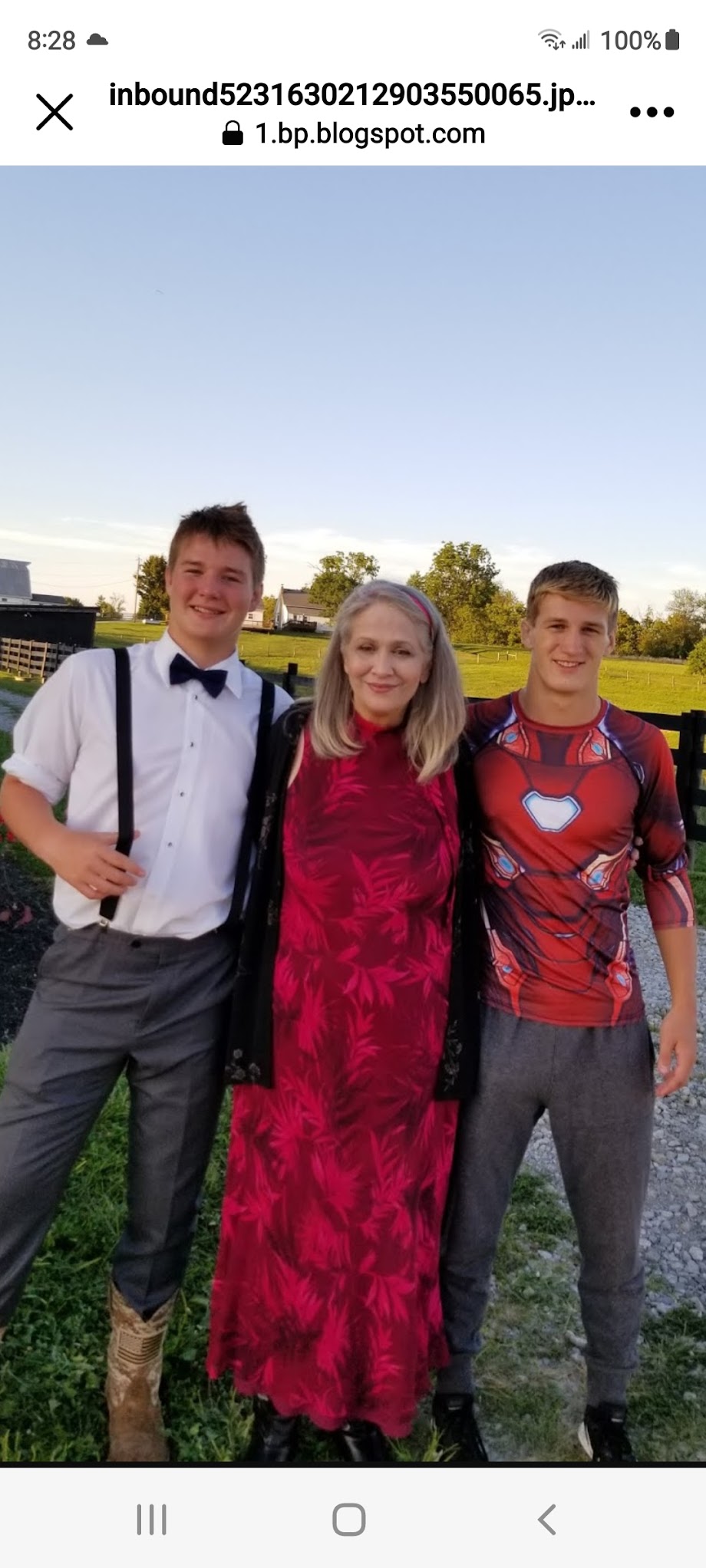 I spent some time this past weekend watching a very thoughtful group of actors, directors and crew research the reactions of the visually impaired to their surroundings. Linda Chung, who has lost most of her sight, is a student at Asbury College and is serving as a consultant for Studio Players' production of Wait Until Dark. Linda is a bright, resourceful, and enthusiastic person to meet and I was fascinated with the many questions from the cast and crew, which she cheerfully answered, and she anticipated their needs and made suggestions as well.
I spent some time this past weekend watching a very thoughtful group of actors, directors and crew research the reactions of the visually impaired to their surroundings. Linda Chung, who has lost most of her sight, is a student at Asbury College and is serving as a consultant for Studio Players' production of Wait Until Dark. Linda is a bright, resourceful, and enthusiastic person to meet and I was fascinated with the many questions from the cast and crew, which she cheerfully answered, and she anticipated their needs and made suggestions as well. More about Wait Until Dark in blogs to come as I follow their progress, but my experience reminded me that sometimes we are not sure about the proper ways to communicate with those who are disabled. I say that because as I was leaving, I spoke up to make sure Linda heard me to say we were going, and she put out her hand for me to shake; but I found her so delightful, I thought perhaps she could use a hug. Once I did embrace her, she quickly gave me the biggest bear hug - especially from a little gal -- I've ever had the pleasure to know...and just when I was feeling good about my judgment, I blurted out, "See you next time, Linda!" of course...and immediately thought, "oh gawds, Kimmy, did you really just say that?"
Then I recalled what Dr. Nick Kouns and I had talked about last year in relation to one of his pet art+healthcare projects, Side by Side. Kouns is a Lexington cardiologist whose dedication to improving lives through art and healthcare manifests itself every day in increasingly creative ways. I had asked him for a list of guidelines to provide insight how everyone might be more comfortable when speaking to someone who is impaired. Perhaps you will find some tips here to help you next time you're in a similar situation.
Etiquette for Communicating with Persons with Disabilities
1. When talking with a person with a disability, speak directly to that person rather than through a companion or sign language interpreter. 2. When introduced to a person with a disability, it is appropriate to offer to shake hands. People with limited hand use or who wear an artificial limb can usually shake hands.
3. When meeting a person with a visual impairment, always identify yourself and others who maybe with you. When conversing in a group, remember to identify the person to whom you are speaking.
4. If you offer assistance, wait until the offer is accepted. Then listen to or ask for instructions.
5. Treat adults as adults. Address people who have disabilities by their first names only when extending the same familiarity to all others. (Never patronize people who use wheelchairs by patting them on the head or shoulder..)
6. Leaning or hanging on a person’s wheelchair is similar to leaning or hanging on a person and is generally consider inappropriate. The chair is part of the personal body space of the person who uses it.
7. Listen attentively when you’re talking with a person who has difficulty speaking. Be patient and wait for the person to finish, rather than correcting or speaking for the person. If necessary, ask short questions that require short answers, a nod, or shake of the head. Never pretend to understand if you are having difficulty doing so. Instead, repeat what you have understood and allow the person to respond. The response will guide your understanding.
8. When speaking with a person in a wheelchair or a person who uses crutches, place yourself at eye level in front of the person to facilitate the conversation.
9. To get the attention of a person who is Deaf or hard of hearing, tap the person on the shoulder or wave your hand. Look directly at the person and speak clearly, slowly, and expressively to determine if the person can read your lips. Not all people who are hard of hearing can lip-read. For those that do not lip-read, be sensitive to their needs by placing yourself so that you face the light source and keep hands, cigarettes, and food away from your mouth while speaking.
10. Relax. Don’t be embarrassed if you happen to use accepted, common expression such as “See you later.” or “Did you hear about that?” that seem to relate to a person’s disability.
I hope this makes your day more meaningful in some way. Thanks again to my friend Dr. Nick Kouns for everything he does, everyday to help those who are marginalized in today's world.
pray for peace,
pray for peace,
Kimmy


No comments:
Post a Comment